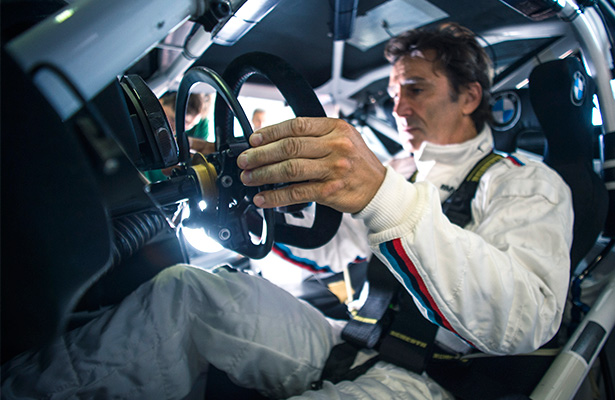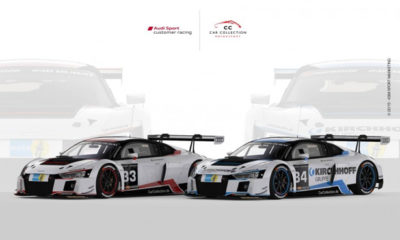Over the past months a team of nine engineers developed several technical solutions that will allow Alex Zanardi to optimally compete in a 24-hour race, and to make the driver changes between himself and his teammates happen in the shortest time possible.
The objective was clear: Develop a car that can be raced for 24 hours without having to make compromises for both Zanardi and his able-bodied colleagues Timo Glock and Bruno Spengler, while also being able to complete driver changes in the fastest-possible way.
The end product only made its first miles at the beginning of June, during a roll-out at Adria Raceway, ROAL Motorsports’ home base, followed only a week later by the Paul Ricard 1000km and Spa test day, in preparation for this weekend’s Total 24 Hours of Spa.
“When we started planning for the 24-hour race, everyone was hooked immediately,” Zanardi said on the eve before the test day. “That showed me that they all believe in me and trust me to be competitive enough.
“They not only see it as an adventure to drive with me at this endurance race, but also believe they have a good chance of getting a good result for BMW.”
BMW Motorsport used the base chassis raced by Zanardi in the Sprint Series last year, but completely revised and optimized it, using some of the existing components.
Essential to the entire concept is the exchange of the steering wheel whenever Zanardi enters the car, with the Z4 atomically adjusting to needs and controls specifically designed for the Paralympic athlete.
Zanardi’s steering wheel was described by himself as a piece of art. Based on the one he used last year, it still has the throttle ring to accelerate.
However, instead of shifting paddles on both sides he now just has a shifting system on the right side, making it easer for him to shift while dosing the amount of acceleration with the throttle ring.
The steering wheel for Glock and Spengler is the standard one, but a manual clutch was mounted on the rear of the steering wheel, thus eliminating the need for a pedal.
The pedal box is divided into two zones, with the throttle and brake pedal for Glock and Spengler in the middle, surrounded by dividers, with Zanardi’s brake pedal and footrest on both sides, giving the Italian additional support for maximum braking power with his right leg.
Zanardi is now able to just slip his prosthetic leg on to the brake pedal that now has a pin attached to it, which fits into the cavity at the bottom of the leg.
This pin solution does not take up much space, offers a fixed connection with the prosthetic leg and reduces pitstop times considerably, while also making it easier to for him to get out of the car.
As Zanardi can apply less power onto the brake than normal drivers – he has no control over knee movement and has to apply pressure via his hip – his brake ratio is approximately 30 percent higher compared to Glock and Spengler.
BMW Motorsport also revised the engine software, as there are two accelerators, which automatically switches by the change of the steering wheel.
The air conditioning system from the Z4 GTE was installed, as Zanardi needs additional cooling due to the fact that he has no legs, limiting his ability to control his body temperature.
The seating position, meanwhile, has been moved back and is completely straight now, giving as much space as possible for the driver change.
“I am quite satisfied with the job we have done so far,” Zanardi said after the test day. “I can drive the car better than last year and the ergonomics definitely suit me better.
‘This is fantastic as at first we were trying to develop something that allows Timo and Bruno to jump into the car and drive to the best of their abilities, in spite of the aids we have installed for me.
“What we developed helps me to get a better feel for the brake pedal and to attack with the car even more.”
Both Glock and Spengler confirmed they didn’t feel their ability to control the car and push it to the limit was compromised, though Glock admitted he was considerably slower than Alex after the first laps.
“The car is easy and consistent to drive. All three drivers prefer the same setup, making life much easier for the engineers, but we still have to further optimize the driver changes,” said Glock.


























